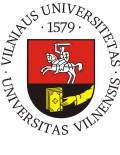Members of the research group attended three different conferences in July. Head of the group Vidmantas Gulbinas gave oral presentation "Charge Carrier Generation and Transport in Merocianine : Fullerene Blends for Solar Cells" in 7th international conference on materials for advanced technologies ICMAT 2013 in Singapore. Renata Karpicz presented a poster "Electronic properties of indan-1,3-dione […]
Vytautas Abramavicius – PhD student in Vilnius University has joined our research team as a junior researcher. We wish him best luck and great results!
Several authors (including D. Peckus and V. Gulbinas) from University of Cologne in germany and Center for Physical Sciences and Technology have published their research results in an article Charge Transfer States in Merocyanine Neat Films and Its Blends with [6,6]-Phenyl-C61-butyric Acid Methyl Ester. This work can be found in volume 117 of the Journal […]
Three articles have been published in paper format by the project research group. All papers appeared in volume 404 of the Chemical Physics journal. You can see digital copies by following the links below: Tautomeric forms of PPI dendrimers functionalized with 4-(4′-ethoxybenzoyloxy)salicylaldehyde chromophores Exciton diffusion, annihilation and their role in the charge carrier generation in […]
Welcome to the website of Vidmantas Gulbinas research group. The research of this group is funded by the European Social Fund under the Global Grant Measure.






